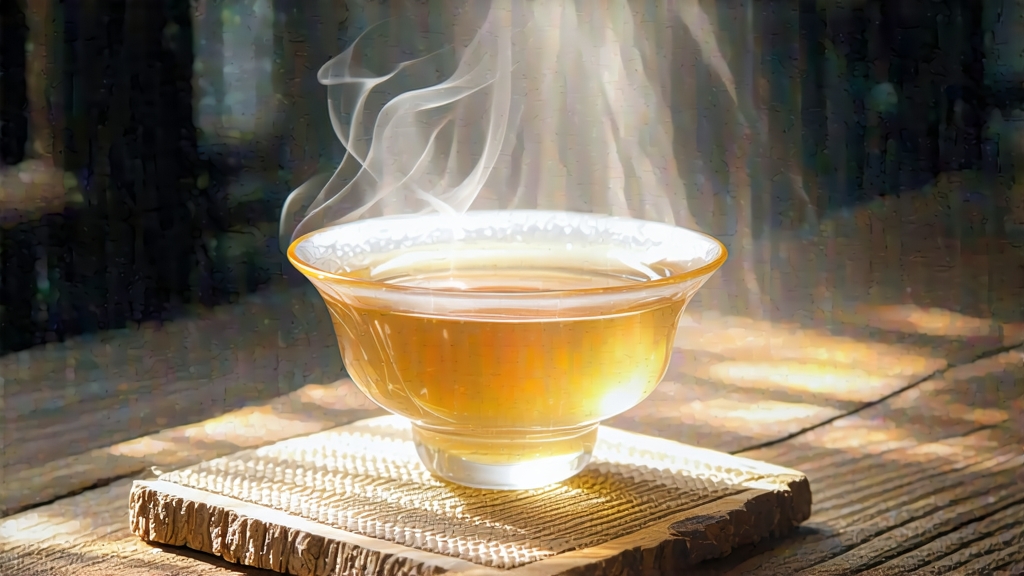
Tucked away in the northeastern corner of Fujian province, where the Wuyi foothills roll gently toward the East China Sea, lies the small county of Fuding. For more than twelve centuries its name has been synonymous with one of the most delicate and coveted teas on earth: White Hair Silver Needle, or Bai Hao Yin Zhen in its original Chinese. International drinkers often meet white tea first through mellow Bai Mu Dan or aged Shou Mei cakes, yet Silver Needle remains the genre’s aristocratic pinnacle—an expression of terroir, season and human patience so subtle that it is frequently described as “drinking moonlight.”
Historical whispers
The earliest written record of white tea appears in the Song Dynasty treatise “Da Guan Cha Lun” (1107 CE), where court tea master Cai Xiang praises “white-coated buds of unparalleled elegance.” At that time the leaves were steamed, powdered and whisked like matcha; the modern, minimally-processed form did not emerge until the late 1700s, when Fuding growers began air-drying freshly plucked buds for export to European apothecaries who believed the pale infusion cooled fevered blood. By the 1880s Silver Needle had become one of China’s first teas to fetch more than its weight in silver on the London market, and in 1891 it won a Grand Prix at the International Agricultural Exhibition in Venice. During the 20th century civil wars and trade embargoes pushed the tea into obscurity, but since China’s economic reopening in the 1990s production has rebounded; today Fuding alone boasts 38,000 hectares of certified white tea gardens, and Silver Needle accounts for barely eight percent of that yield, making each spring’s harvest a quiet international race.
Terroir and cultivar
Authentic Silver Needle is fashioned exclusively from the unopened buds of two local cultivars—Fuding Da Bai and Fuding Da Hao—whose leaves are unusually rich in amino acids and trichomes, the tiny hairs that give the tea its silvery sheen. The maritime climate blankets the gardens in morning fog, while afternoon sea breezes lower humidity just enough to prevent enzymatic spoilage during the long withering hours. Soils are lateritic, laced with weathered granite that drains quickly yet holds warmth, coaxing the bushes into storing more soluble sugars in their dormant buds throughout winter. The result is a raw material that tastes almost sweet on the branch, long before any human hand intervenes.
Plucking ritual
The harvest window opens for only ten to fifteen days each spring, beginning when the average nightly temperature stabilizes above 10 °C and the buds reach 2.5–3 cm in length yet remain unopened. Experienced pickers work at dawn, before the sun burns off the dew, using only the thumb and index finger to snap the bud cleanly without squeezing sap onto the surface—any bruise will oxidise into an unsightly russet spot during drying. A proficient worker gathers roughly 1,500 buds per hour; 30,000 are required to make one liang (500 g) of finished tea, which is why Silver Needle is often sold in 25 g tins that feel mysteriously weightless.
Crafting “the living bud”
Unlike green tea, Silver Needle is never pan-fired or rolled. Its manufacture is a study in restraint: wither, dry, sort, rest. The freshly harvested buds are first spread on bamboo trays stacked in ventilated corridors where natural cross-flows of air lower their moisture from 75 % to 40 % over 36–48 hours. Temperature is kept below 28 °C; higher heat fixes greenness but kills the subtle floral precursors. Once the buds feel leathery to the touch they are transferred to charcoal-heated chambers for a final low-temperature bake at 35–40 °C for another four to six hours. Master crafters judge doneness by pressing a handful against the cheek: the buds should feel dry yet spring back silently, without the crackle that indicates brittleness. After sorting out any blemished pieces the tea is left to “calm” for at least three weeks so that residual moisture migrates evenly from core to surface; only then is it packed in triple-layered kraft paper lined with cotton, the traditional material that allows the buds to breathe while shielding them from light.
Chemistry in the cup
Minimal processing leaves intact an unusually high